When I was growing up, my mother always wondered who I got my nose from. Don’t get me wrong, I definitely am my parents’ son; I have features from both my mother and my father, but some aren’t clearly hand-me-downs from either: the most obvious being my nose.
Since it appeared that I didn’t inherent either of my parents’ noses, my mother looked back another generation: her parents and their siblings, my father’s parents and their siblings. Nothing. Another generation back, still no match.
For years it bothered her as it seemed odd that my nose would be clearly different from everyone else in the family. As the youngest child living in the shadow of my older sister’s accomplishments, I always proudly proclaimed that I had MY nose because I was unique and individual. Of course this did nothing to persuade my mother, and she kept pondering.
During my teenage years, my mother began the slow process of researching our family’s genealogy, and over the last two decades she has pieced together good portions of at least the last 250 years from her father and mother’s sides and some of my father’s as well. While it is far from being complete, and there are sometimes large gaps in time, we have begun to have a decent idea of how we ended up where we were.
A few years back, for my grandfather’s eightieth birthday party, my mother had an old photo of his ancestors taken around the Civil War era to have enlarged and digitally cleaned up to display during the party. When she received the final large print and was looking over it, she made a surprising discovery – there was my darn nose!
There, on my great- great- great- great-granduncle’s face, was a perfect copy of my nose, defiantly poking out while the rest were clearly different nose shapes. There was the genetic legacy of my nose: only he and I (as far as we have discovered) have had this nose shape within that family, and it stays buried in the gene pool just waiting to pop out every 100 years or so. While rare, it is definitely there, and one more proof that am a descendant of an unbroken chain of genetic duplication.
Sometimes, all we need to do is look back into our past to find traces of what we are today; traits passed down over the years that combine to create our unique form. Once in a while, we find an exact match in our past, or even more rarely, a doppelganger – that ancestor that we look almost identical to. Sometimes it can be rather spooky.
Yet it is perfectly understandable because that past, that legacy, is what we use to design the present – at least in the case of present-day watchmaking. And no brand is as adept at creating modern-day doppelgangers as Breguet, the decidedly classical watchmaker that loves to bring history into the future.
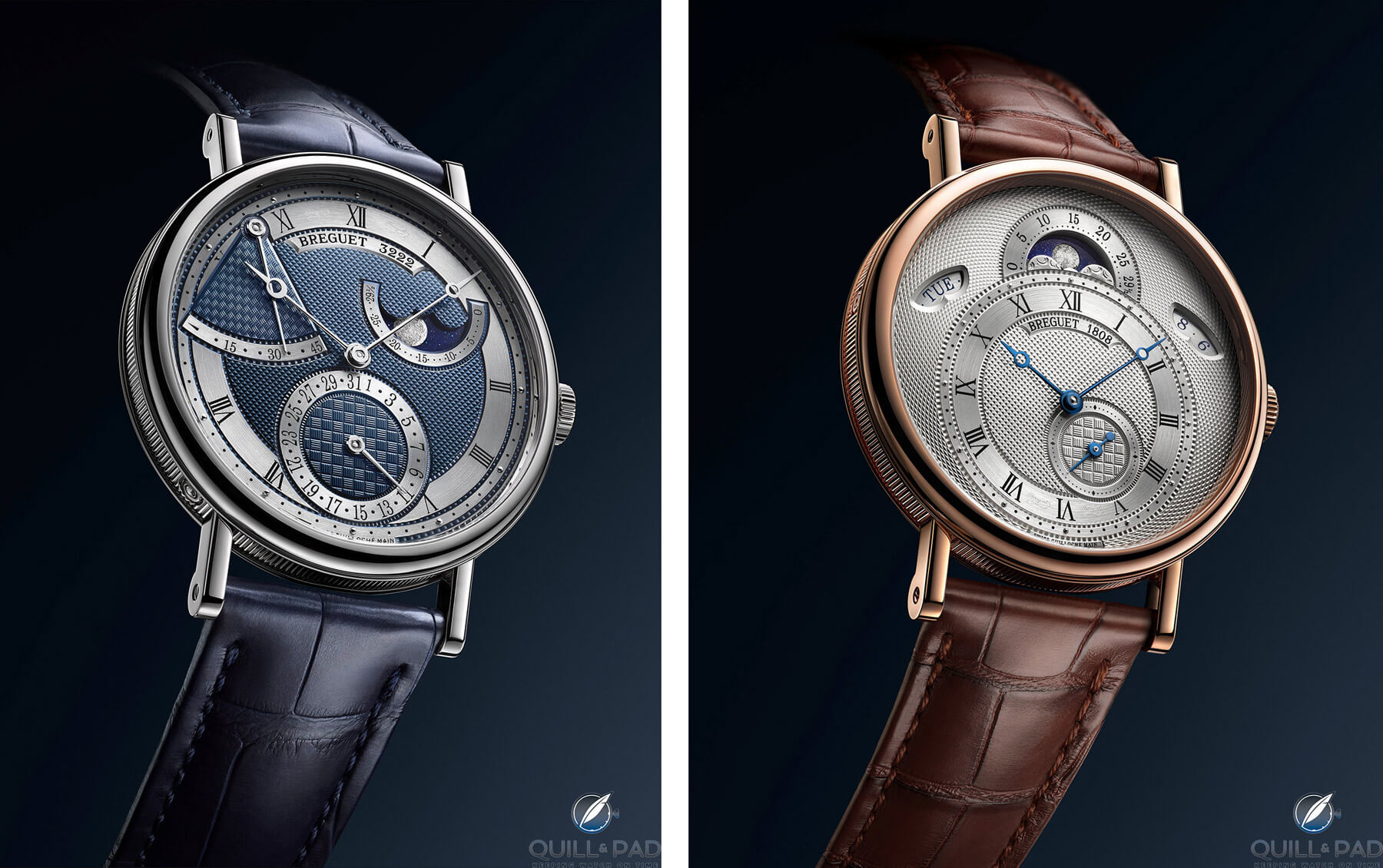
Breguet Classique Reference 7137 (left) and Reference 7337
The most recent examples of Breguet’s long term DNA are the Breguet Classique 7137 and 7337, the newest members of the aptly named Classique collection. Both models focus on recreating historical pocket watches; the 7137 and 7337 demonstrate why some classical watches still look incredible and relevant even today.
Breguet Classique Ref. 7137 and Ref. 7337 inspiration
Both models are based off historical pieces in terms of design, layout, and details. The 7137 largely replicates the Breguet No. 5, a quarter repeating pocket watch with power reserve and phases and age of the moon, completed by Breguet in 1794.
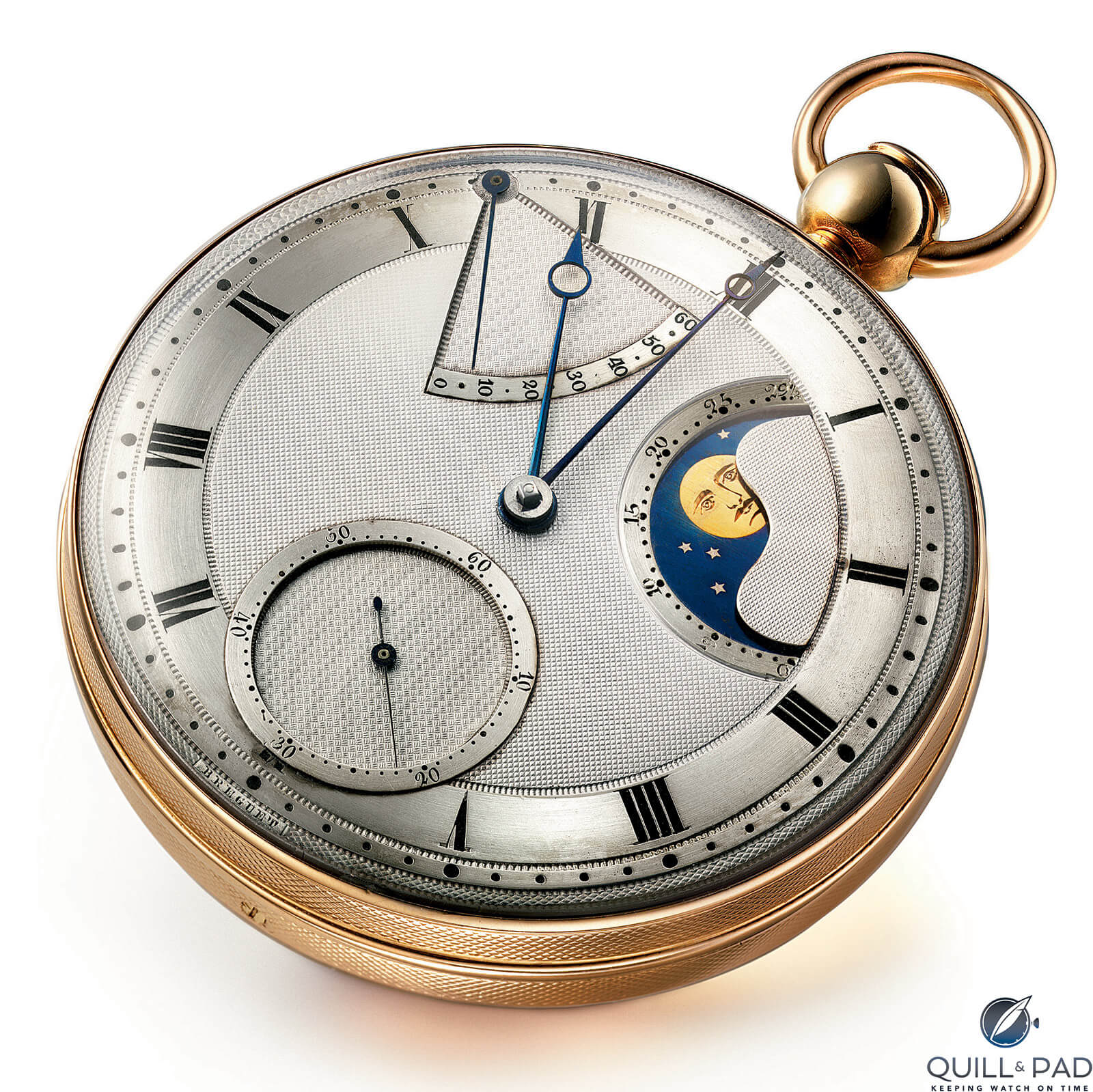
The Breguet No. 5 historic pocket watch
This pocket watch has been faithfully replicated and produced as wristwatches serially by Breguet since 2004, so the design is fresh in the minds of those at the brand.
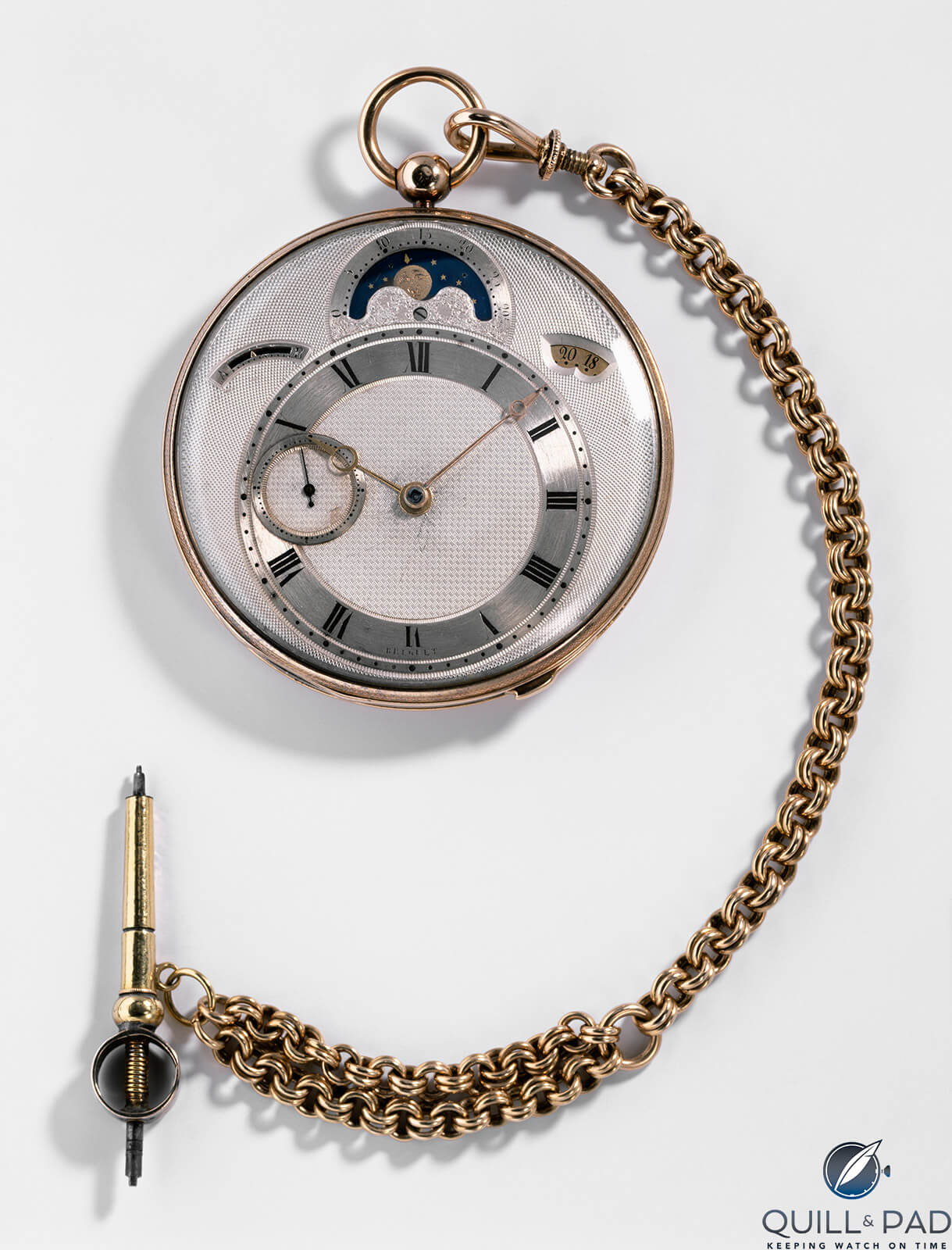
The historic Breguet No. 3833 pocket watch
The 7337 seeks to mimic the Breguet No. 3833, an extra-thin half-quarter repeating pocket watch with date, power reserve, and again phases and age of the moon that was originally sold in May 1823 and now is on display at the Louvre.
The 7337 follows the design and layout more closely of the original as compared to the 7137, yet the power reserve was replaced with a day of the week so the displayed information is different from the original.
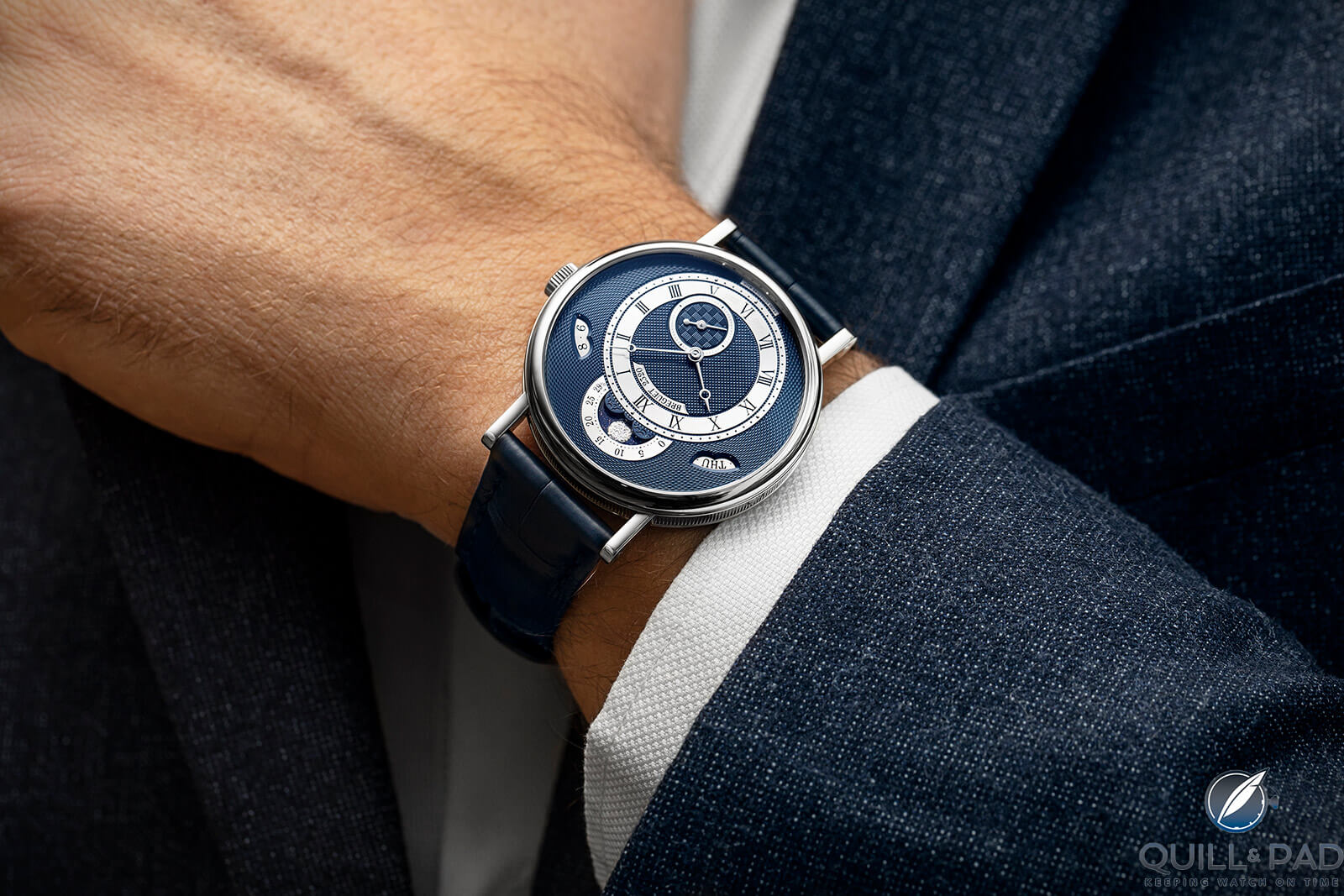
Breguet Classique Ref. 7337 with blue dial on the wrist
The most significant functional difference that affects both, however, is that neither are repeating watches. The modern wristwatch versions have opted to include an automatic winding system (making them supremely more wearable for the average user) and not venture into chiming watch territory, something that seeks to make them much more accessible to the typical collector.
But let’s be real: the purpose of these pieces was not to perfectly reproduce the original in wristwatch form but to serve as a canvas to show off the guilloche skills the brand commands while continuing a design legacy centuries in the making.
Modern classics
I don’t want to give the impression these models are entirely new; they are already in the collection in more “old-school,” classic attire with a conservative, early 1990s vibe due to the dated style of the moon phase engraving, the choice of guilloche styles, and slightly heavy numerals, not to mention a couple in yellow gold case options (which is making a small resurgence in popularity).
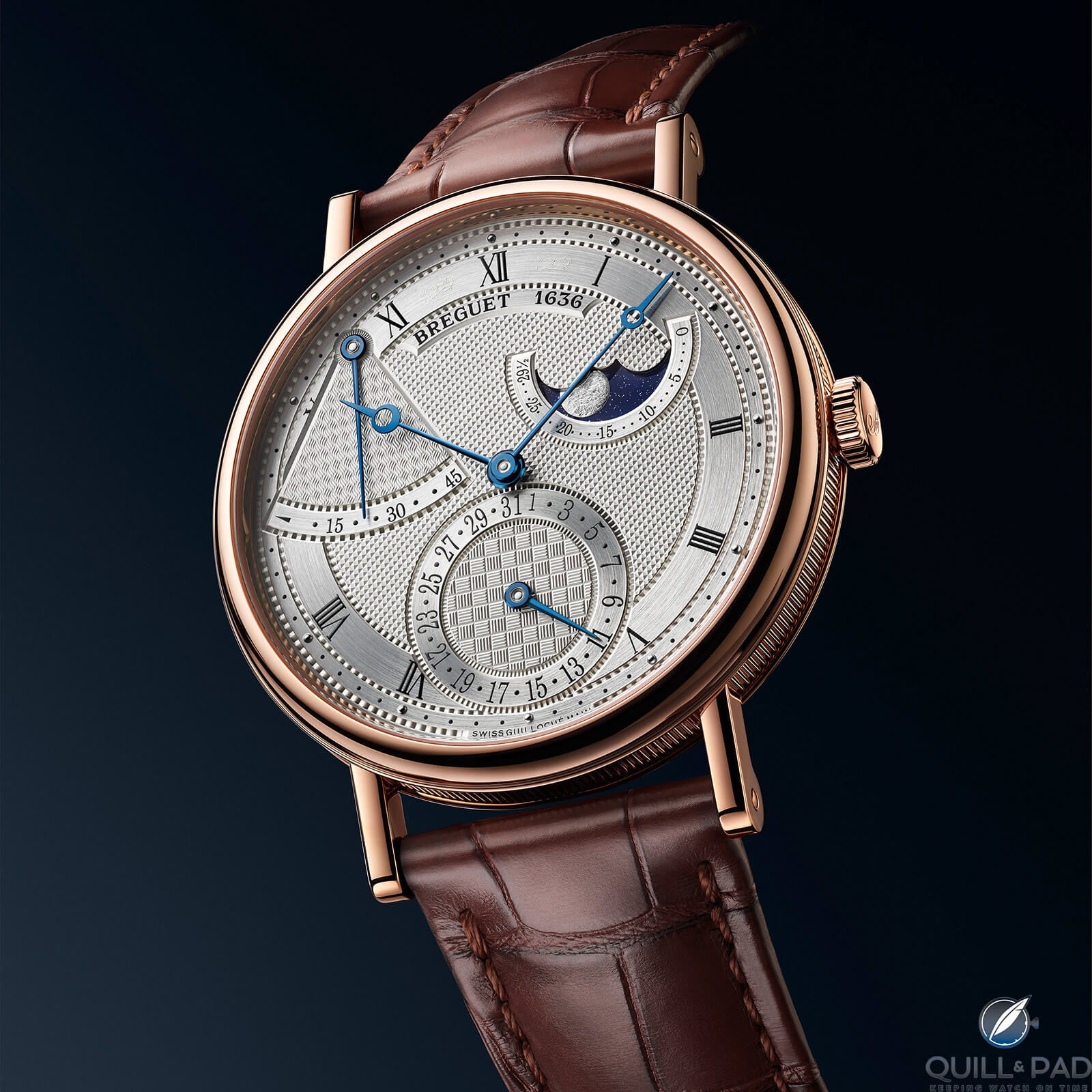
Breguet Classique Ref. 7137 with silver dial
The changes to the latest releases might seem small, but when viewed in context they result in watches that are decidedly modern and timelessly classic. They are a great example of designers fully grasping what details have aged beyond the mainstream, and what looks as good as ever.
The most obvious detail to me is the classically cartoony face engraved on the moon. It’s very accurate to the originals, but a feature that has stylistically gone the way of the dodo as engravers have favored more accurate representations of the moon or more abstract depictions relying less on the tired “man in the moon” imagery.
If the moon phase isn’t a textured representation of the moon’s surface or a photorealistic laser engraving, then modern moons have gone simple (polished, single-color circles) or become unique to the watchmaker (Stepan Sarpaneva’s caricature moon is a fantastic example).
The moon phase on these models has gone for the mottled lunar surface look done using hand engraving, so it didn’t seek to match lunar features but instead slightly abstractly allude to the texture of the moon.
This is helped by the dark-blue moon phase disk in what appears to be lapis lazuli, so the silver moon is set against a backdrop of golden star-like specks and not the stylized five-pointed-star shapes. This style feels more attuned to the modern aesthetic and still feels entirely traditional, a sweet spot of design.
Moving on, the yellow gold case of the previous iterations comes straight from tradition. It has surged in the last few years, but still remains a very small segment of the modern watch aesthetic.
The newest versions only feature white and pink gold case options, and while the previous 7337 featured two variants with pink gold cases, the 7137 was limited to yellow (and white) gold.
That allows one to see the difference a switch to pink gold can make; the pink gold acts as something like a bridge from the purely traditional to the contemporary.
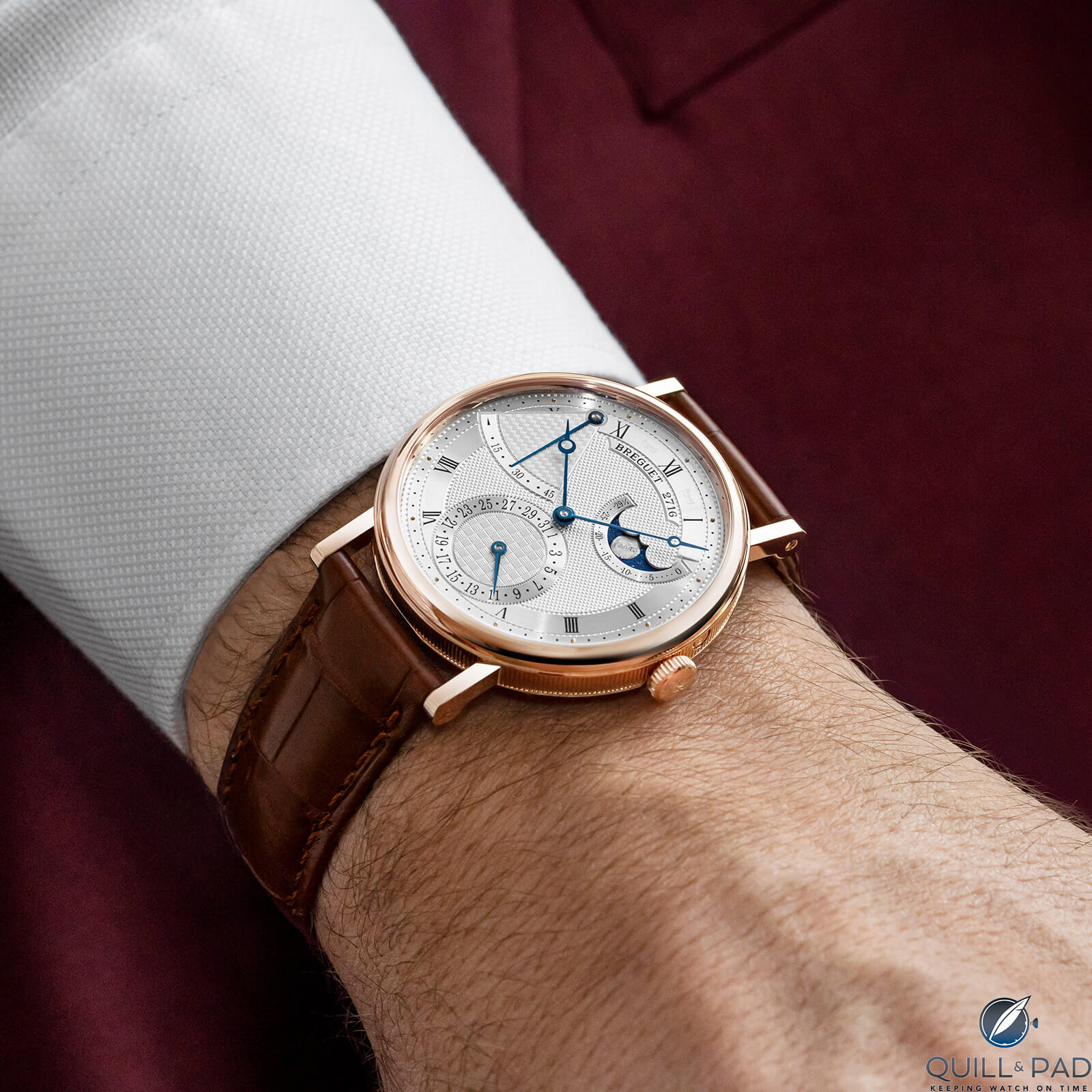
Breguet Classique Ref. 7137 on the wrist
And, again, there is nothing wrong with yellow gold, but it is obvious when combined with the dial details that one can feel more dated aesthetically. Another major detail changing the look dramatically is the addition of a blue dial for both models; previously, this version only featured the silvered gold dial.
That blue adds some serious contrast to the dials that helps increase the perception significantly. The blue dials are found on the white gold case versions, crucial to creating visual distinction across the face of the watch. White gold watches with silver dials and Roman numerals are ultimate classics, but in some contexts they can feel a tad stale.
Guilloche changes everything
But to my mind, one of the smallest changes making the biggest difference is the choice of guilloche patterns on the dials. These watches, and many Breguet pieces altogether, are fantastic examples of this craft.
And the earlier versions were no different, all featuring tremendous guilloche across the entire dial. And the newest versions are mostly the same. But the choice of the pattern for a few details has somehow made a significant difference in how I perceive the design of these dials. Let’s have a look at each model.
On Reference 7337, we see three main differences between earlier versions and these new iterations, specifically the pattern of the subdial for seconds, the pattern within the offset time dial, and the two half circles of the moon phase display.

Guilloche dial of the Breguet Classique Ref. 7337
The moon phase display previously exhibited a combination of wave and barleycorn patterns, but it was only found on those two little areas. The new versions opted for a hand-engraved flourish instead, and while fairly minor it doesn’t stand out as much as the previous unique pattern that didn’t match anything else on the dial. A small change that doesn’t make a huge difference, but evidence that the artisan designing the guilloche realized that area was a bit odd.
While that was tiny, the subdials for seconds and offset time are a different story. The previous offset time dial featured a panier maillé basketweave pattern that is very nice, but feels a bit flat over that large a space compared to the new model, which opts for a stronger clous de Paris hobnail.
The hobnail pattern is much bolder, which matches the updated aesthetic nicely. The bolder choice continues to the subdial for seconds, which sees the previous diamond sunburst replaced by a damier checkerboard pattern that thematically matches the rest of the dial better.
I wouldn’t have realized how much more intriguing the guilloche could get until I saw the new combination and immediately felt it resonate with me.
The 7137 is a similar story but only sees two main changes in patterns, though I argue that they also dramatically improve the overall aesthetic. The date subdial previously had what I would call a simple line flower petal design, almost like a sunburst, but shaped similarly to the hand indicating the date.
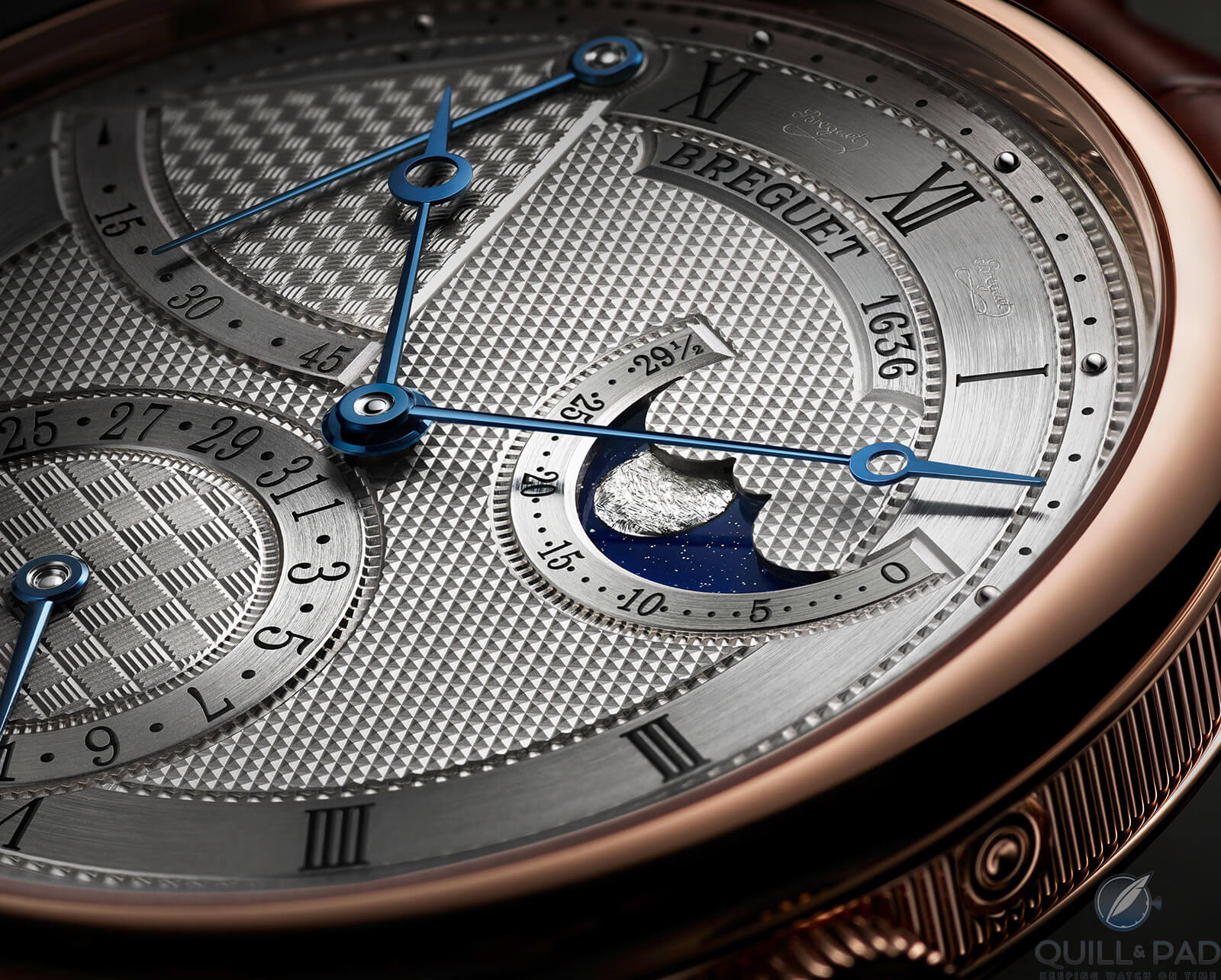
Dial closeup of the Breguet Classique Ref. 7137
The design also had 31 narrow “petals” to match the number of numerals on the scale and aligned with each number. While clever from a craftsmanship standpoint (alignment must have been a nightmare for those shapes) it felt underdeveloped and a bit gimmicky given the visual complexity of the designs elsewhere on the dial.
The new models feature a damier checkerboard pattern like that of the 7337, which ties the two models thematically and provides a much more realized aesthetic for the dial.
The second change is the power reserve, which is wedge shaped on the upper left side of the dial. On older models, it had a radiating wave pattern that makes perfect sense based on the shape, but feels like a very “classic” design in that context.
The updated pattern borrows from the older Reference 7337 and implements a panier maillé basketweave pattern that, on a smaller surface area than the entire dial, works much better in context with the other updates and keeps the dial more geometrically related.
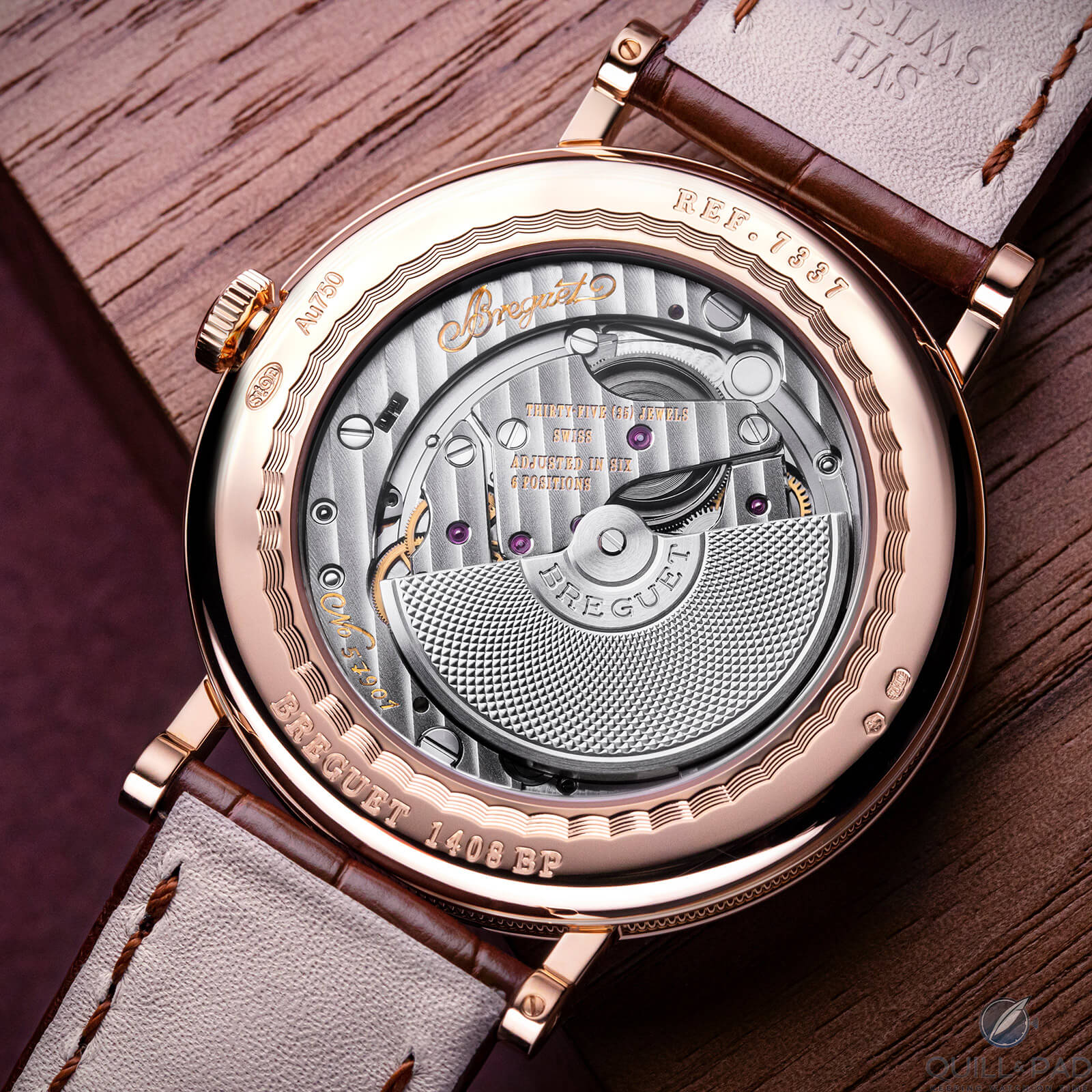
Guilloche rotor visible through the display back of the Breguet Classique Ref. 7337
The older guilloche pattern choices are great, and the skill to create them is still incredible, but given the popular usages of guilloche across the industry, the new patterns feel like a modern company using time-tested techniques to create the most beautiful designs as possible.
As stated before, once the changes were made from the older designs, it became clearer that these dials were much more cohesive and considered from an overall design sense.
That is what makes these pieces amazing: the artisans took two awesome layouts from historical pieces, tweaked some proportions and positions for the new wristwatch format, and then updated the guilloche to best represent a modern implementation of a truly genius classical design.
Breguet is a master at the classics, always maintaining a clear thread from the earliest days to the present. The Classique 7137 and 7337 are fabulous examples of Breguet at the top of its classical aesthetics game.
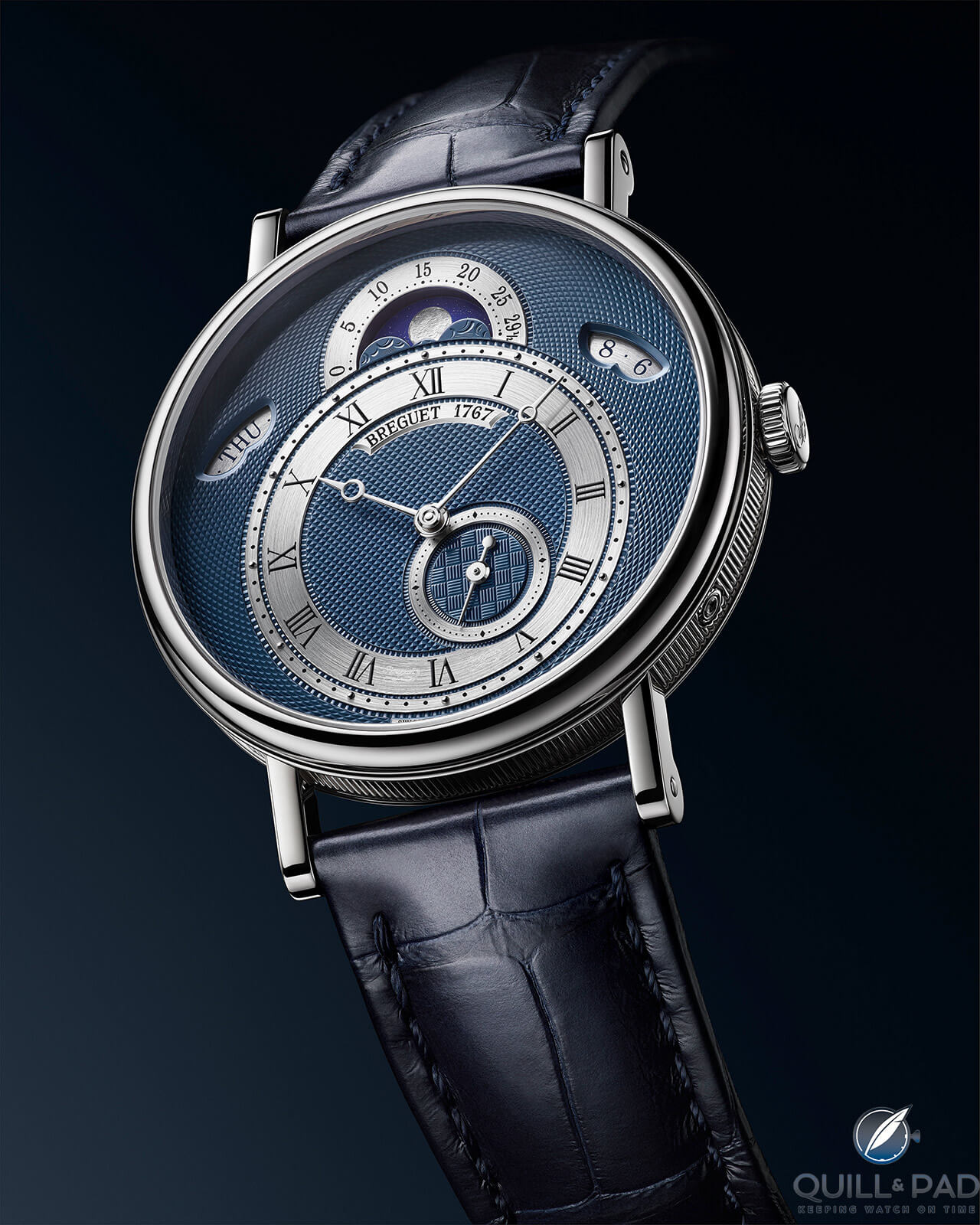
Breguet Classique Ref. 7337 with blue dial
If Breguet just happened to send one of the white gold, blue-dialed versions of the Classique 7337 my way, you know, for long-term durability testing, I’d be all set.
Hey, a guy can dream, right? What else is there to do in quarantine!?
Well, I guess I can break it down!
- Wowza Factor * 9.6 Unless you have no taste for history and prefer boringly plain watches, then how could you not be wowed by these pieces!?
- Late Night Lust Appeal * 101.3» 993.414m/s2 The updates to the aesthetics and the addition of blue dials have me lusting so hard I couldn’t fall asleep if I wanted to!
- M.G.R. * 58.86 Breguet, a true classic, presenting modern versions of truly classical movements? Oh yeah!
- Added-Functionitis * Moderate Both the Classique 7137 and 7337 feature three additional functions, though differ in display and content between the two. Still, three added functions definitely call for extra-strength Gotta-HAVE-That cream for historically inspired swelling.
- Ouch Outline * 11.8 Getting a touch of bleach on your eye after disinfecting all the touch-points in your car! Quarantine brings new dangers including the accidental contact with semi-caustic chemicals from wipes used to protect your health and safety. No worries, it only burned a bit and was washed out quickly, but it’s clearly evidence that I need to stop touching my face, though I may just do it again if it meant getting one of these two beauties on my wrist!
- Mermaid Moment * Now that looks better! Small changes really can make a large overall difference, and these two models proved that to me almost immediately!
- Awesome Total * 984 First add the number of components in the caliber 502.3 QSE1 found in the 7337 (236) to the number of components in the caliber 502.3 DR1 found in the 7137 (256), then multiply by the number of new variations each model has (2) for an aesthetically cohesive awesome total!
For more information, please visit www.breguet.com/en/timepieces/classique.
Quick Facts Breguet Classique Ref. 7137
Case: 39 x 8.65 mm, pink or white gold
Movement: automatic Caliber 502.3 DR1 with silicon hairspring, 21,600 vph/3Hz frequency, 46-hour power reserve
Functions: hours, minutes; date, moon phase, age of the moon, power reserve
Price: $40,000
Quick Facts Breguet Classique 7337
Case: 39 x 8.65 mm, pink or white gold
Movement: automatic Caliber 502.3 QSE1 with silicon hairspring, 21,600 vph/3Hz frequency, 45-hour power reserve
Functions: hours, minutes, seconds; day of the week, date, moon phase, age of the moon
Price: $43,000
You may also enjoy:
Breguet Classique Extra-Thin Self-Winding Tourbillon Reference 5367: The Power Of Blue
Breguet Classique Tourbillon Extra-Plat Squelette 5395: Reinterpretation Done Right





















































Leave a Reply
Want to join the discussion?Feel free to contribute!